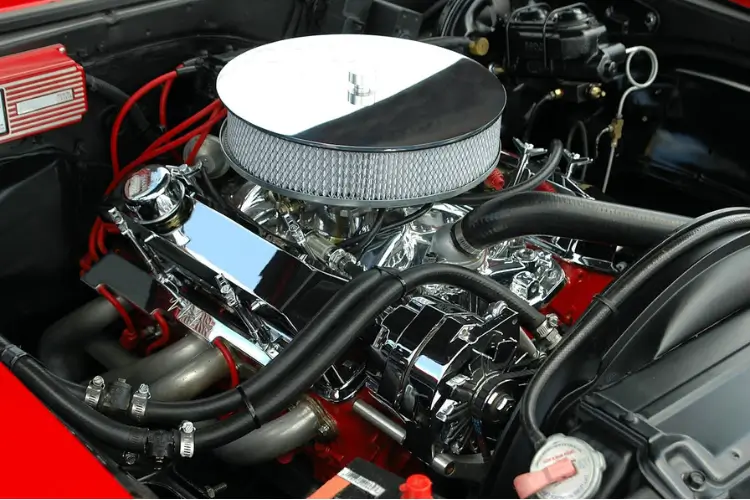Tuning a car’s engine is both an art and a science, pushing the potential of any vehicle to new heights. A tuned engine provides more power, greater fuel economy, and an enhanced driving experience with the right modifications. Whether one is racing or just optimizing daily performance, tuning allows the engine to perform at its optimum under different circumstances. Dive into the fundamentals of engine tuning, learning about the components, processes, and benefits of optimizing your car’s engine to provide an unparalleled driving experience.
Understanding Engine Mapping and Its Impact on Performance
The fundamental procedure behind tuning is engine mapping, which entails performance enhancement by means of Engine Control Unit (ECU) adjustments. The engine’s behavior is determined by important variables that are controlled by the ECU, including fuel injection, ignition timing, and air-fuel ratio. Changing the engine map will help the automobile to be tuned to provide greater power, better fuel economy, or better handling under specific conditions. An optimized map might, for example, change the air-fuel mixture to maximize combustion, hence raising horsepower and torque. Whether for ordinary commuting or high-speed racing, many tuners customize engine maps to meet particular driving requirements, therefore matching performance to expectations. Proper mapping transforms the engine’s response, thereby enabling quicker throttle response, smoother acceleration, and an overall more dynamic driving experience.
Boosting Power through Forced Induction: Turbocharging and Supercharging
By adding a turbocharger or supercharger, forced induction is a common technique for significantly boosting engine output. Exhaust gasses are used in turbochargers to compress air entering the engine, therefore enabling more air and fuel to burn and, hence, greater power production. On the other hand, superchargers directly link to the engine, therefore providing instantaneous power boosts while depending on engine power to compress air. Both choices let engines generate greater horsepower without appreciably expanding engine size. To maintain dependability and avoid engine damage, forced induction does, however, depend on a precise tune. Turbocharging or supercharging combined with appropriate tuning provides unmatched performance improvements for enthusiasts looking for significant power increases.
Upgrading the Air Intake and Exhaust for Optimal Flow
Engine tuning depends critically on improving air intake and exhaust flow as these changes provide improved airflow, therefore enabling the engine to perform more effectively. Cold air intake systems pull cool air from outside the engine compartment, which is denser and contains more oxygen. This increases combustion efficiency, therefore improving power and fuel economy. High-performance headers and pipes with an enhanced exhaust system help to lower back pressure and enable more free escape of exhaust gasses. When combined, these modifications produce a smooth airflow into and out of the engine, improving combustion and producing more horsepower. A quality car tuner considers these upgrades essential because they lay the groundwork for any future modifications by establishing efficient airflow.
Besides hardware such as cold-air intakes and freer-flowing exhausts, replacing certain OEM plastic components with lightweight, precision-formed carbon fibre can aid airflow packaging and reduce mass without altering vehicle geometry. Many direct-fit carbon parts replicate factory mounting points and thermal properties while offering improved durability; for specialist, UK-based options and professional fitment information see Dissident Automotive. Because these components are designed as non-invasive replacements, they make staged performance upgrades easier for enthusiasts who want reliability alongside gains. Used alongside intake and exhaust tuning, well-chosen carbon parts can subtly improve throttle response and heat management without complex reengineering.
Refining Fuel Systems for Enhanced Combustion Efficiency
Since they immediately affect the combustion process of the engine, fuel systems are essential for tuning. Essential for preserving power levels in tuned engines, upgraded fuel injectors, high-flow fuel pumps, and pressure regulators provide a constant and sufficient supply of fuel to the engine. These modifications enable the engine to reach the ideal air-fuel ratio by boosting fuel delivery, hence enabling more horsepower and torque. For vehicles with forced induction, where the increased airflow increases the demand for fuel, fuel system modifications are particularly crucial. When the fuel system is properly tuned, the engine runs smoothly, maximizing power output and efficiency without sacrificing stability or dependability.
Adjusting Transmission and Gear Ratios for Balanced Power Distribution
The efficient distribution of engine power to the wheels can be achieved through sophisticated yet efficient transmission tuning. Adjusting gear ratios lets the engine operate in its ideal power range, which accelerates more quickly and enhances performance at different speeds. Shorter gear ratios, for instance, provide rapid acceleration at lower speeds, which makes them perfect for drag racing; longer gears are excellent for highway travel and fuel efficiency. Particularly for automatic or dual-clutch transmissions, transmission tuning may consist of modifications to gear engagement, clutch response, and shift time. Because of this even power distribution, the car runs smoothly, improving the overall driving experience and making sure the engine runs as efficiently as possible.
Conclusion
Engine tuning is a comprehensive process that includes everything from air intake changes to transmission adjustments. Every element and modification helps to improve performance, therefore enabling the engine to run more effectively and economically. A car’s engine can produce more power, responsiveness, and dependability with precise tuning, providing a driving experience that is truly unmatched.




